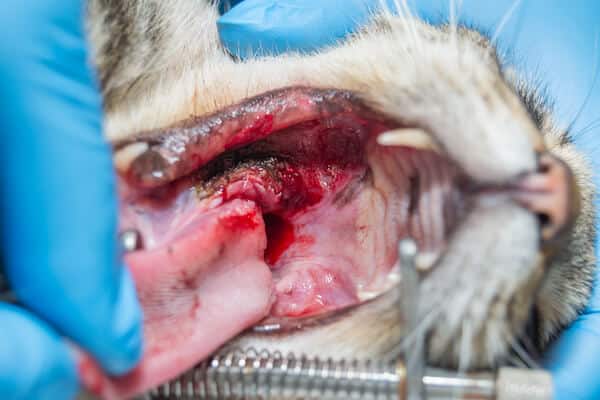april, 2024

Course Details
Of the numerous cancers that affect our feline companions, lymphoma, squamous cell carcinoma, soft tissue sarcoma and mammary tumours are the most frequently diagnosed in the veterinary clinic. This 4 week
Course Details
Of the numerous cancers that affect our feline companions, lymphoma, squamous cell carcinoma, soft tissue sarcoma and mammary tumours are the most frequently diagnosed in the veterinary clinic.
This 4 week course dedicates a week per subject, where we explore the risk factors associated with each of these neoplasms and investigate the methods used to acquire a diagnosis. Treatment options will be discussed with particular detail placed on medical and surgical management techniques that can be applied to general practice and specialist nursing alike.
After completing this online course, participants will have a greater knowledge of these common diseases, enabling understanding of the prognosis and treatment goals; ultimately broadening communication and practical skills in the subject area.
This course is particularly suitable for nurses who have experience in oncology and are looking to broaden their knowledge and compliments the ‘Common Canine Cancer’ course with particular focus on feline friendly care. For nurses in general practice, the course ‘Introduction to Oncology’ may be more suitable.
Week 1
Mammary Tumours
Mammary tumours are a common tumour in cats which are often malignant, yet a small percentage are benign. Early detection and intervention can have a positive outcome and some patients go on to live disease-free lives, others require continuous treatment and monitoring.
Presentation and behaviour of mammary tumours
Diagnosis and staging
Treatment modalities and monitoring considerations
Learning objectives
After completion of this week, participants should be able to:
Explain the potential causes of mammary tumours in cats
List what investigative procedures may be necessary to secure a diagnosis and what safety factors should be observed when sampling masses
Understand which treatment modalities are most useful for which form of the disease
Describe the patient and client care considerations when managing cases of feline mammary tumours
Week 2
Lymphoma
Lymphoma is a cancer of the lymphocytes and/or lymphoid tissue, which is present in many locations within the body; presentation and treatment of these cases is dependant on location. This week we will cover:
Manifestation of feline lymphoma and categories of disease
Diagnosis, staging and prognostic indicators
Treatment options for feline lymphoma
Chemotherapy protocols, client expectations and how to create a feline friendly environment
Learning objectives
After completion of this week, participants should be able to:
List the common manifestations of feline lymphoma and the patient groups most affected
Understand the value of staging and monitoring the disease
Describe the subtypes of feline lymphoma and the difference in treatment approaches
Explain the rationale of a multimodal chemotherapy protocol and how it may impact on prognosis
Analyse personal skill set and determine how you could support feline patients with lymphoma using your practice facilities
Week 3
Squamous Cell Carcinoma
Squamous cell carcinoma is the most common form of head and mouth cancer in cats; the behaviour of this neoplasm is sometimes unpredictable and can be very invasive. On week three we discuss the presentation, investigation and treatment options available for these patients and look at some practices which are novel to veterinary medicine.
Presentation, diagnosis and staging of squamous cell carcinoma, including lymph node mapping
Treatment options and impact on prognosis
Surgical interventions, nursing support and rehabilitation
Introduction to electrochemotherapy and photodynamic therapy
Learning objectives
After completion of this week, participants should be able to:
Describe the different imaging techniques used to evaluate feline squamous cell carcinoma
List treatment options and prognostic indicators for feline squamous cell carcinoma
Understand the mechanism of action behind novel techniques for feline squamous cell carcinoma
Describe the common surgical interventions and post-operative patient considerations
Week 4
Soft Tissue Sarcoma
Feline injection site sarcoma (FISS) is one of the most common soft tissue sarcomas of cats. The disease may present as a minor mass to the owner but often this is just the tip of the iceberg. Week 4 looks at FISS in more detail and brings the courses learning materials all together in this last week
Soft tissue sarcoma pathophysiology overview
Diagnostic and staging processes
Treatment options, radiation and surgical management
Adjuvant (post-operative) chemotherapy and restaging
Learning objectives
After completion of this week, participants should be able to:
Describe the diagnostic approach to determining cancer diagnosis and tumour burden
Explain typical neoplastic behaviour of FISS and the impact of intervention on survival time
Understand the fundamental reasoning for adjuvant chemotherapy and the options for post-operative care
The course will be fully tutored by Nicola Read, and will consist of 10 hours of CPD given in various formats, including tutorials, tasks, case studies, forum discussions and quizzes. This course is tutored for 4 weeks, followed by a two week extension of untutored ‘catch up’ time, before the course officially ends.
All delegates will then have unlimited lifetime access to the learning material for future reference
Time
April 22 (Monday) - May 17 (Friday)
Location
Online
Speaker
Nicola ReadDipAVN (Medical), PgCert Veterinary Oncology, AFHEA, RVN Head Oncology Nurse, Royal Veterinary College



0 Comments